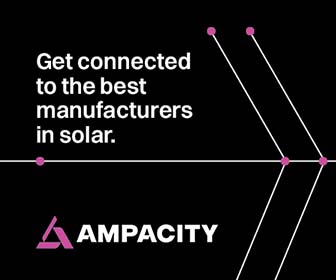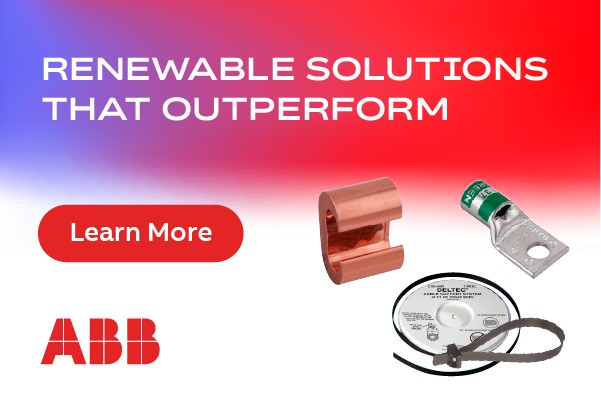Inverters that Optimize Production & LCOE in Extreme Weather & Terrain
Owners of PV systems want the flexibility to be able to build their projects in remote locations and harsh climates while still enjoying reliable, high performance production for the 35+ year life of their system. How these demands are met all comes down to the brains of any PV system, the inverter.
High performance under extremely high temperatures
One of the most important components for delivering solar power to the grid is the inverter. On hot summer days, when the temperature reaches the average high, cooling is required to maintain a certain level of power output. If the inverter is not converting that power to its full potential, that lost efficiency translates into lost energy production. Regular operations and maintenance work, to keep the air flow at an adequate level, is another major key to maintaining inverter power output at a high efficiency. Refer to Graph A for an inverter power derating curve versus temperature.
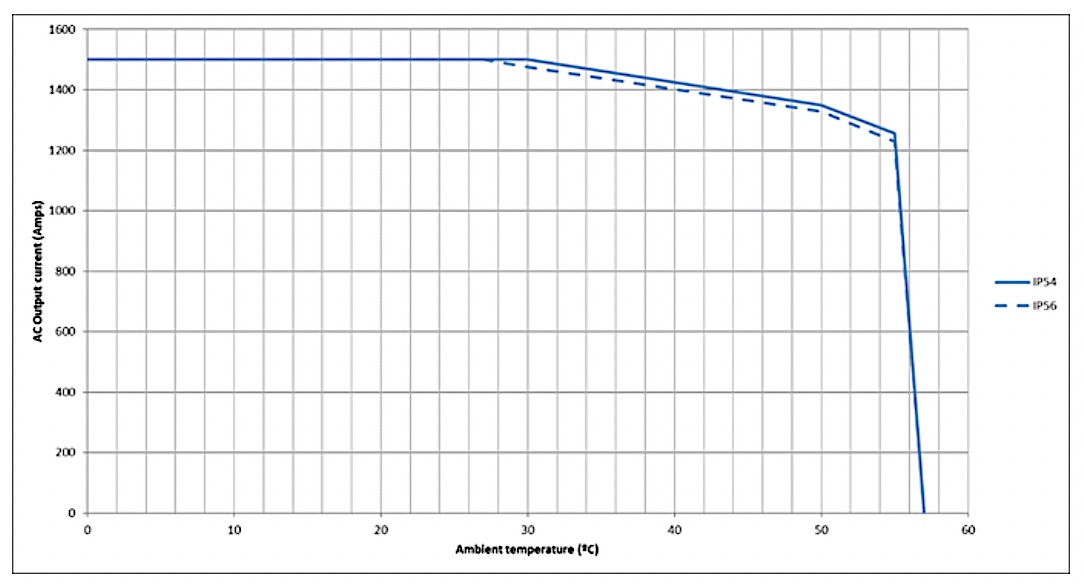
Graph A
Inverters are designed with different cooling mechanisms. Some of the most innovative ones are dual channel ventilation systems, with air forced and temperature control to optimize the cooling process. An additional air-air exchanger guarantees IP66 / NEMA4 for the electronic components, with an adequate airflow inside the inverter. The power stacks and electronics' compartment are air cooled by a closed-loop heat exchange system (with no direct contact with the outside or with any other inverter cabinets). (Image 1 and Image 2) This enhanced functionality makes it possible to increase the ambient operating temperature; thus, increasing the power output curve.
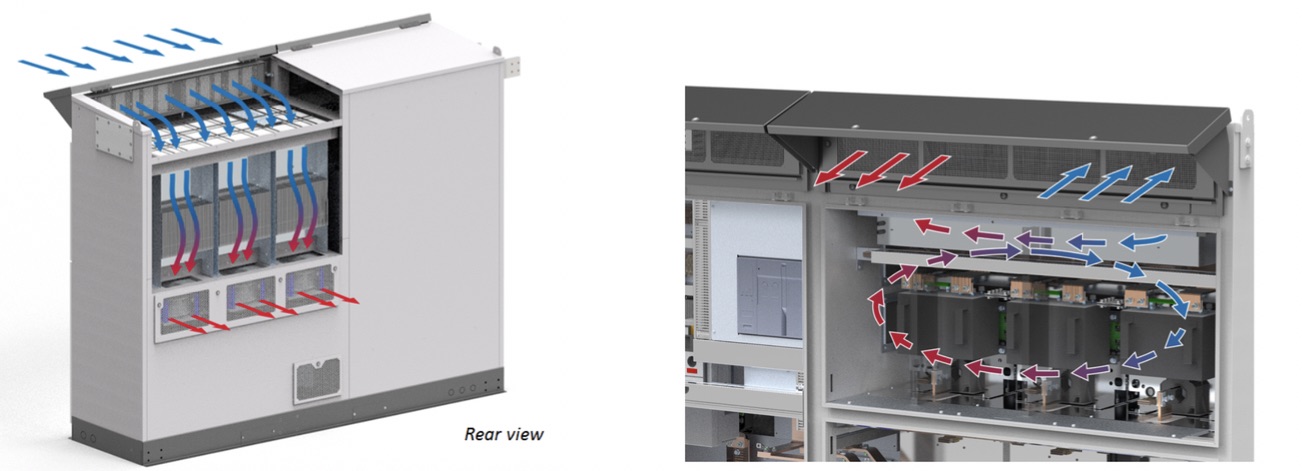
Image 1 Image 2
Other effective cooling systems include two separate ventilation circuits; outside air is drawn in to cool heat-producing components, while circulating warm air is cooled down in an internal ventilation circuit, on the inside of the inverter. The heat exchanger used in this process is operated by fresh-air supply.
Another cooling mechanism worth mentioning is an advanced hybrid cooling system using heat-pipe cooling technology, where the inverter runs without fan operation up to 50 percent load. Heat-pipe cooling simplifies thermal management because it uses fewer parts, and only a slow-speed fan with a heat pipe heat sink.
Standing up to sandstorms
Over the last few years, there has been a dramatic increase in the number of PV installations in desert environments. The benefits include cheap land and excess sun, making it possible to generate solar energy for ~$20 per MWh. Market-led reduction in PV system costs has led to the use of outdoor inverter solutions that dispose of external enclosures to protect the inverters and other equipment at the transformer substations (transformers, medium voltage cells, etc.). This has driven the need for designs that guarantee the reliable operation of equipment in these extreme operating conditions without performance losses.
A "sand trap" system can completely seal the ventilation circuit, for maximum protection against the ingress of particles (which could cause serious technical problems in converters installed in the desert). They may also be certified to the IEC 60068-2-68 international standard by an independent, external laboratory. This standard establishes the conditions to be met by electronic equipment in order to effectively operate in environments with high concentrations of dust and sand.
In order to conduct the sand and dust test, a sealed chamber creates a controlled atmosphere with the humidity, wind velocity, and sand concentration conditions required by the IEC 60068-2-68 international standard. (Image 4)
In addition to the tests specified in the certification procedure, the equipment can be subjected to even more extreme conditions, such as those characteristic of a desert sandstorm - able to withstand situations with a high concentration of particles in the air (100 g/m3) and high wind speed (160 km/h). These dust storms, or "haboobs", have been witnessed in the southwestern states of the US, Abu Dhabi, UAE, and other desert environments around the world. (Image 6)
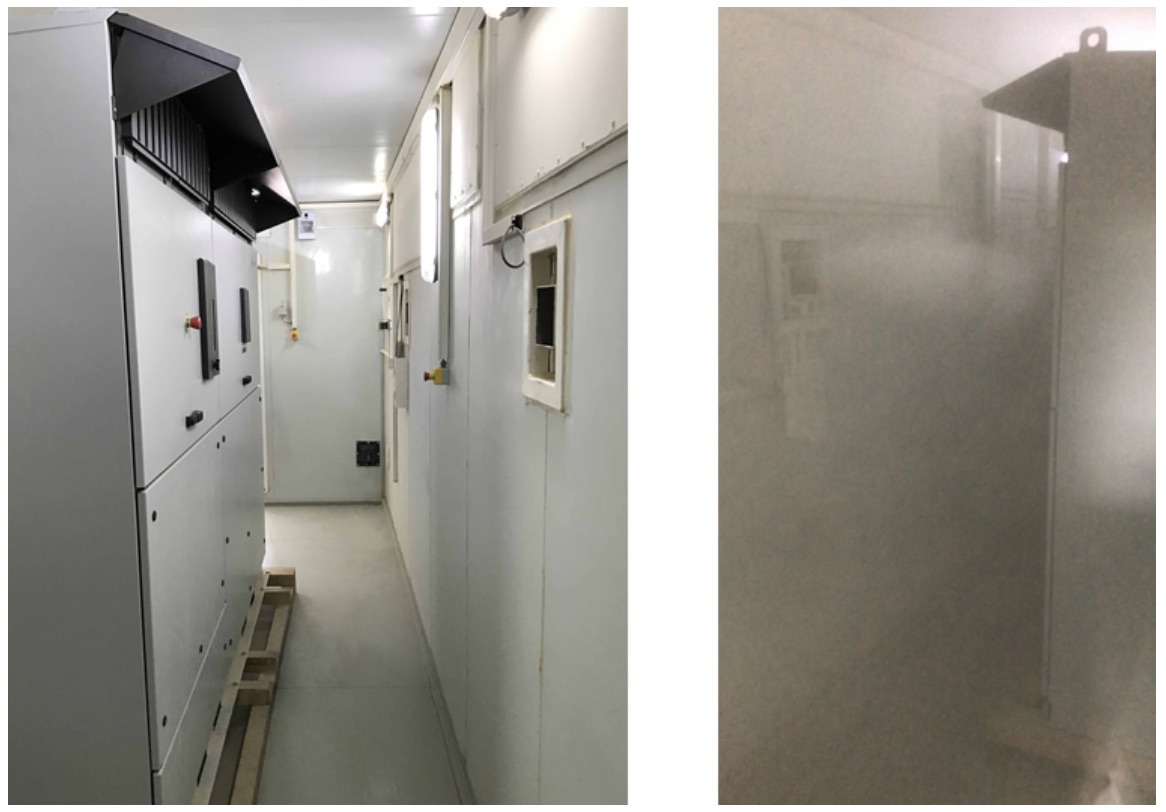
Image 4 - Sand and Dust Test Chamber
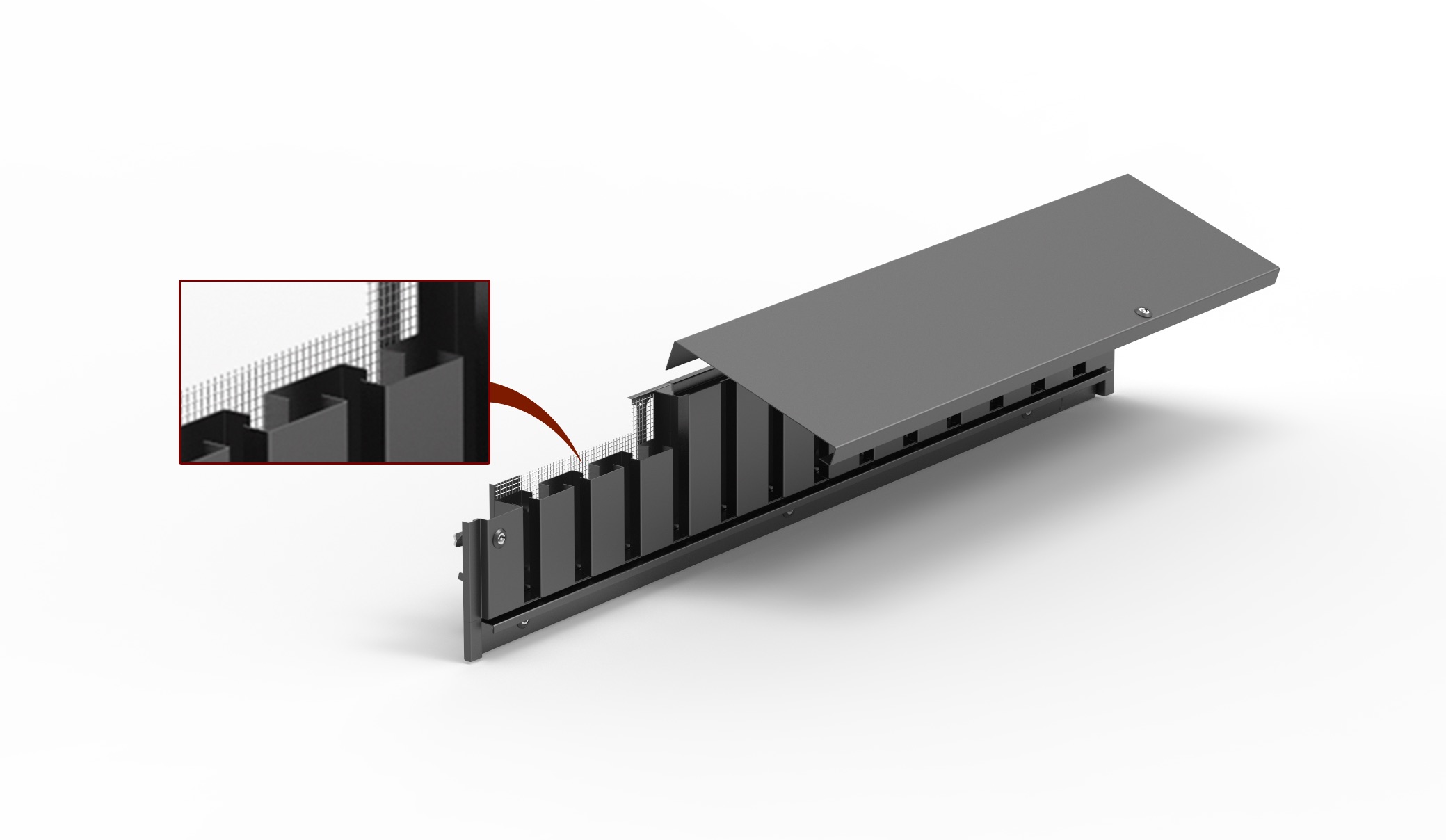
Image 5 - Dust & Sand Trap
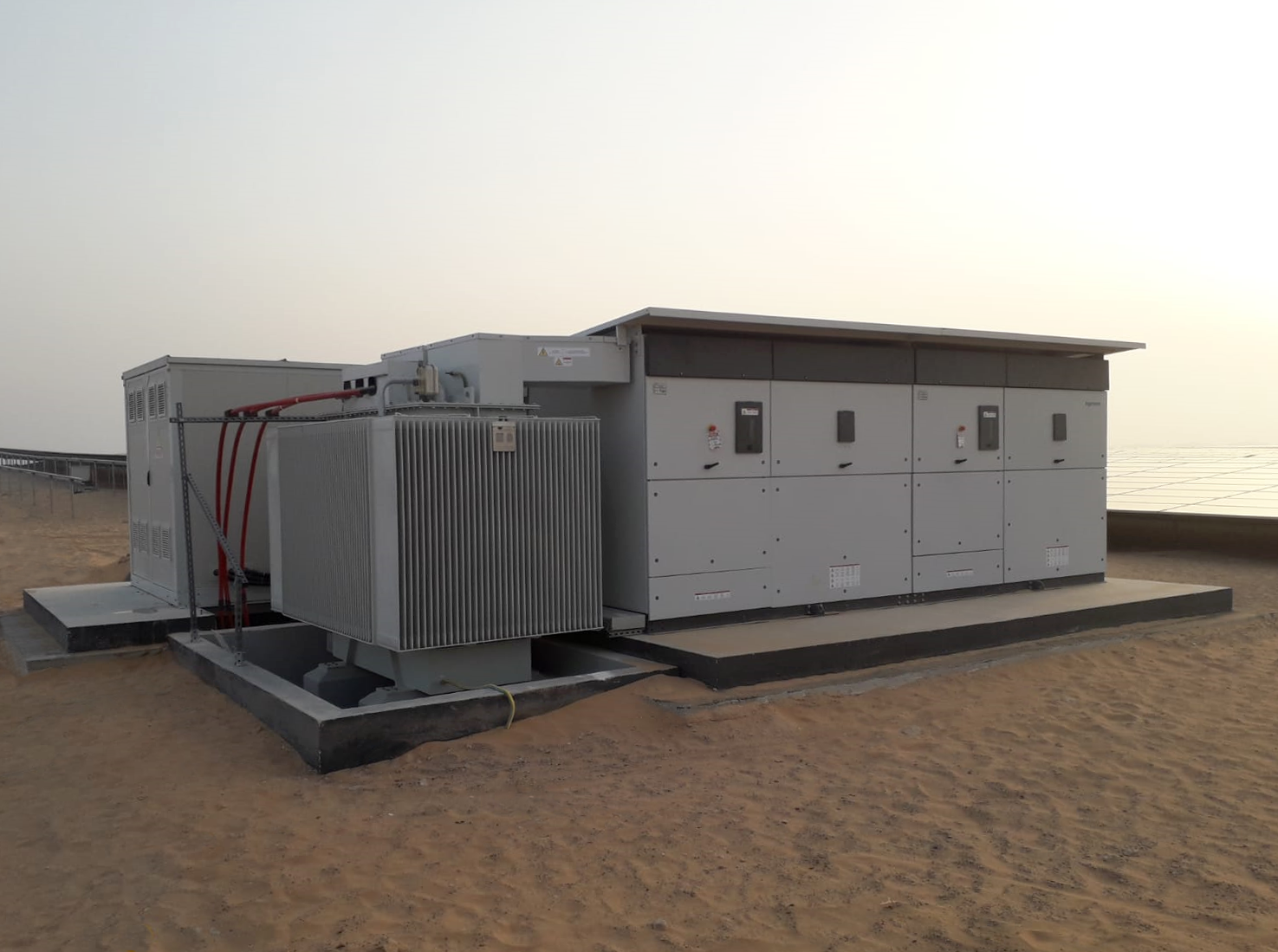
Image 6 - PV Inverters in the Desert
Enduring high humidity and corrosion
Other regions where solar energy makes incredible economic sense includes islands and emerging countries in tropical environments. Many of these locations started out using high cost fossil fuels to generate electricity, which can cost over $200 per MWh. To combat this, many locales have begun to deploy solar plus storage. These regions, as well as coastal cities, are marked by very high humidity and rain, which can shorten the life of the equipment.
Outdoor rated inverters coupled with C5-M-H coating and stainless-steel hardware help to overcome this environmental challenge and provide long operating lives. Many such inverters are already deployed worldwide, performing well on Islands like Hawaii, Puerto Rico, and Reunion Island.
Surviving arctic blasts
Solar photovoltaic cells convert sunlight into electricity. Cold winter temperatures do not impact production as long as they are within the actual operating temperature range of the inverters. In fact, colder temperatures increase module efficiency, and can help improve the output of solar cells. Most PV inverters in the market are designed to guarantee an operating temperature range of around -10 ºF to +140 ºF, with an option to add heating resistors kits for PV installations in cold regions. These heating resistors are designed to guarantee operating at an ambient temperature of down to around -25 ºF.
At the end of January of this year, a large part of the Midwest and the Northeast was hit with an intense Artic air mass. Some areas fell below -30 °F, with wind chills more than -50 °F. Thanks to their heating resistors, several PV inverters were reported as active and able to convert power.
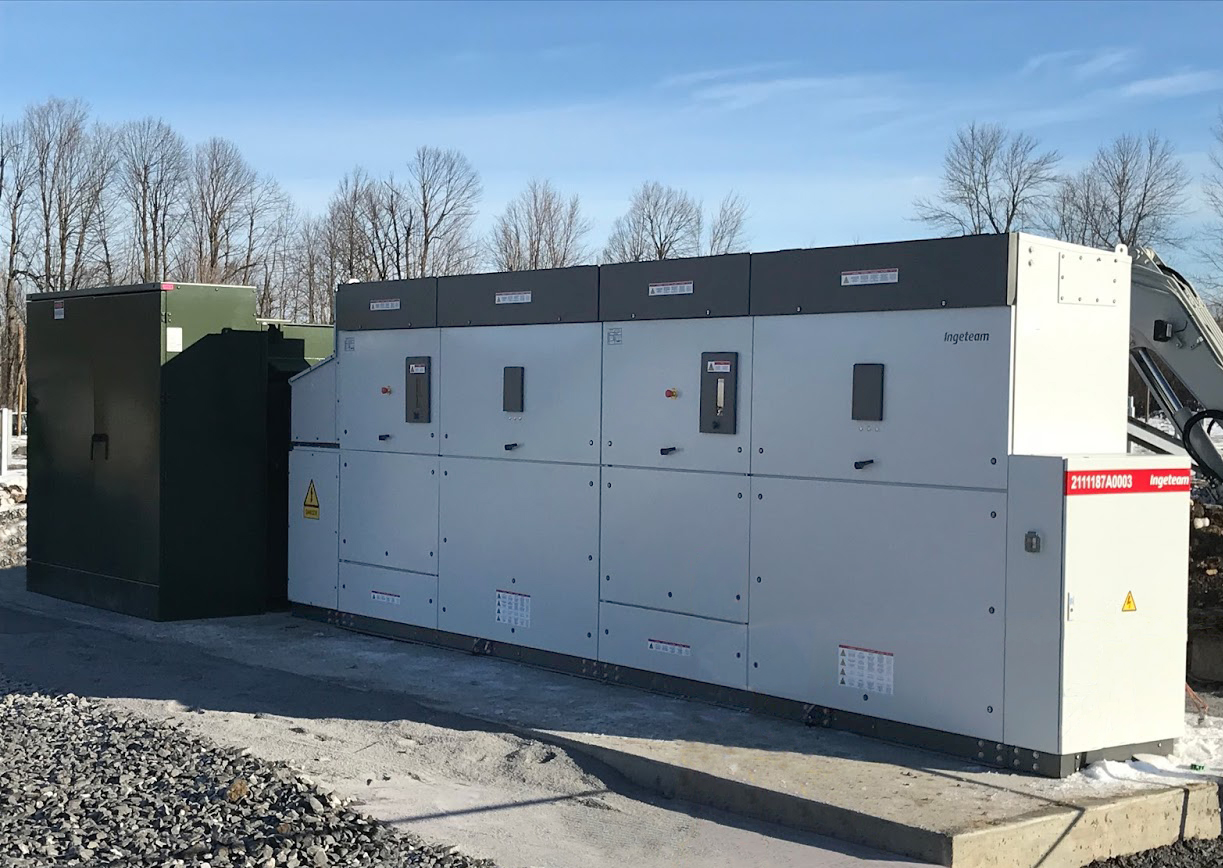
Image 7 - PV Inverters in Cold Climate
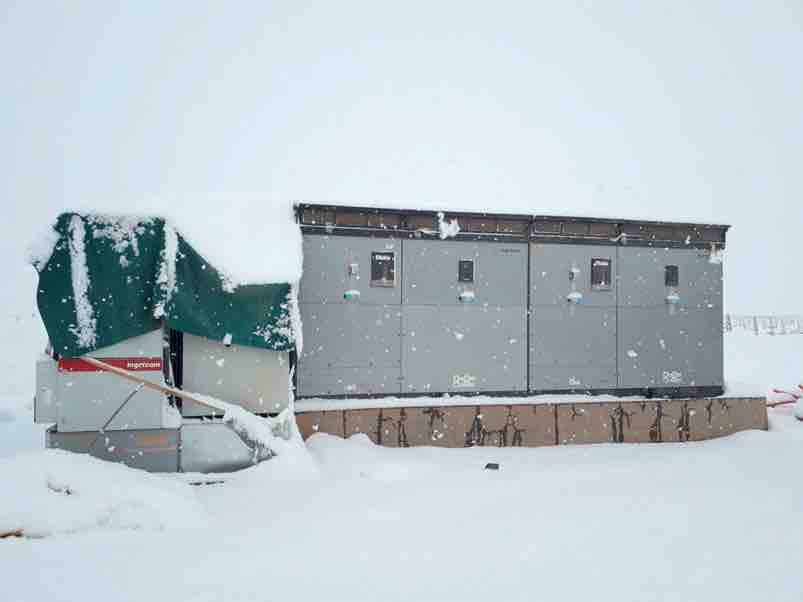
Image 8 - PV Inverters in Snowy Environment
Accommodating uneven topography
For utility-scale PV power plants (20MW or higher), Central Inverters are still considered the preferred option due to their incredible CAPEX and OPEX value-proposition, whether the topography of the terrain is flat or not. Improved design has allowed inverters a high degree of versatility through scalable blocks of power. Inverters may be sized as 1.0MVA to 1.8MVA units, which can be combined as 2.0MVA to 3.6MVA in a dual-inverter configuration. These can be combined as skidless or integrated-skid stations of 1MVA, 2MVA, 3.6MVA, 5.4MVA, or 7.2MVA. Different sized stations are deployed to a site based on the specific topography of the location, and various sizes of sub-arrays in the field. These newer inverters also offer a suite of output voltages (e.g. a range between 450V to 690V) to optimize the medium voltage collection system architecture of each project.
As the PV industry has evolved to be one of the lowest cost sources of new energy generation, it has sparked a demand for PV systems in all corners of the world, including those with challenging locations featuring rugged terrain, drastic temperature variation, and extreme weather events. A robust inverter design that can operate anywhere is fundamental to a long, issue-free life for the PV system. Inverter suppliers continue to provide innovations which protect the inverter from harsh environmental conditions while ensuring high performance, and reliable and durable operation for the lifetime of a project.
Nohra Nasr is Head of PV Sales & Business Development - USA at Ingeteam, a global market leader specialized in the design and manufacturing of power conversion and electrical equipment, mainly large inverters, frequency converters, motors, and generators for Wind, Solar PV, Energy Storage and Hydropower generation plants.
Ingeteam |www.ingeteam.com
Author: Nohra Nasr
Volume: 2019 May/June








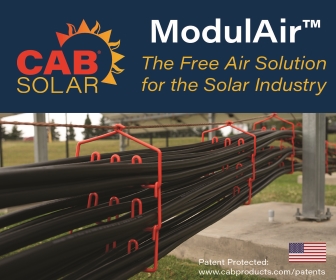
.png?r=6182)
